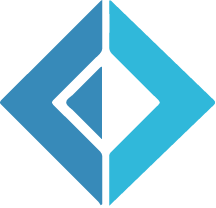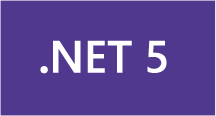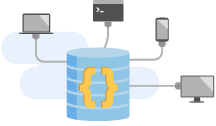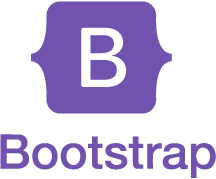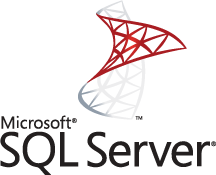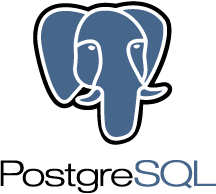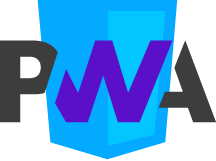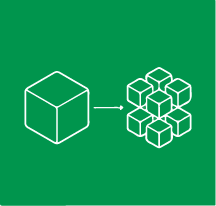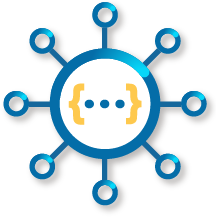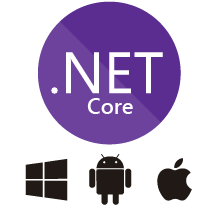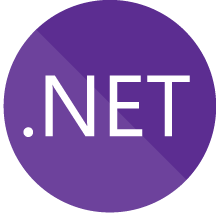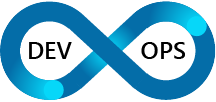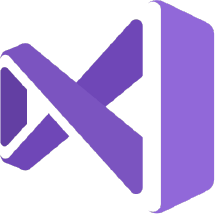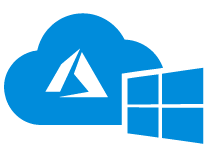Technologies
Our stack
Azure
Microsoft Azure is a cloud computing service created by Microsoft for building, testing, deploying, and managing applications and services through Microsoft-managed data centers around the word. It provides software as a service (SaaS), platform as a service (PaaS) and infrastructure as a service (IaaS) and supports many different programming languages, tools and frameworks, including both Microsoft-specific and third-party software and systems.
f#
F# is a strongly typed, multi-paradigm programming language that encompasses functional, imperative, and object-oriented programming methods. F# is most often used as a cross-platform Common Language Infrastructure (CLI) language, but it can also generate JavaScript and graphics processing unit (GPU) code.
Net5
.NET 5.0 is the next major release of .NET Core after 3.1. They have called this new version .NET 5.0 instead of .NET Core 4.0 for two reasons:
- They have omitted the 4.x version numbers to avoid confusion with .NET Framework 4.x.
- They have removed "Core" from the name to emphasize that this is the main implementation of .NET going forward.
.NET 5.0 supports more application types and more platforms than .NET Core or .NET Framework.
ASP.NET Core 5.0 builds on .NET 5.0 but keeps the name "Core" to avoid confusion with ASP.NET MVC 5. Similarly, Entity Framework Core 5.0 keeps the name "Core" to avoid confusion with Entity Framework 5 and 6.
RESTFul API
REST is acronym for REpresentational State Transfer.
This technology achieve compatibility with 3rd party clients that need to integrate with differents services.
Fundamental Design REST.
- Client / server protocol without state
- Well defined operations (POST, GET, PUT, DELETE)
- Universal syntax
- Use of hypermedia
Blazor
Blazor is open source
Blazor is a Single Page Application development framework. The name Blazor is a combination/mutation of the words Browser and Razor (the .NET HTML view generating engine). The implication being that instead of having to execute Razor views on the server in order to present HTML to the browser, Blazor is capable of executing these views on the client.
Blazor currently has two hosting models, server-side Blazor and Web Assembly. Server-side hosting was released in September 2019, and Web Assembly was officially released in May, 2020.
WinUI
The modern native Windows UI platform
WinUI is a user interface layer that contains modern controls and styles for building Windows applications. As a native Windows UI layer, WinUI 2 is a library of controls and styles currently available for use in Windows applications.
WinUI 2 is a library of controls and styles currently available for use in any UWP application. (Only compatible with UWP XAML).
WinUI 3 dramatically expands WinUI into a full UX framework, making WinUI available to all types of Windows applications - from Win32 to UWP - for use as the UI layer. (It will work with any type of Windows application).
WinUI also serves as the basis for cross-platform technologies.
Tailwind CSS
A utility-first CSS framework packed with classes like flex, pt-4, text-center and rotate-90 that can be composed to build any design, directly in your markup
Utility classes help you work within the constraints of a system instead of littering your stylesheets with arbitrary values. They make it easy to be consistent with color choices, spacing, typography, shadows, and everything else that makes up a well-engineered design system.
Bootstrap
Front-end open source toolkit, featuring Sass variables and mixins, responsive grid system, extensive prebuilt components, and powerful JavaScript plugins.
Azure Storage
Azure Storage is Microsoft's cloud storage solution for modern data storage scenarios. Azure Storage offers a massively scalable object store for data objects, a file system service for the cloud, a messaging store for reliable messaging, and a NoSQL store. Azure Storage is:
- Durable and highly available. Redundancy ensures that your data is safe in the event of transient hardware failures. You can also opt to replicate data across datacenters or geographical regions for additional protection from local catastrophe or natural disaster. Data replicated in this way remains highly available in the event of an unexpected outage.
- Secure. All data written to Azure Storage is encrypted by the service. Azure Storage provides you with fine-grained control over who has access to your data.
- Scalable. Azure Storage is designed to be massively scalable to meet the data storage and performance needs of today's applications.
- Managed. Microsoft Azure handles hardware maintenance, updates, and critical issues for you.
- Accessible. Data in Azure Storage is accessible from anywhere in the world over HTTP or HTTPS. Microsoft provides SDKs for Azure Storage in a variety of languages -- .NET, Java, Node.js, Python, PHP, Ruby, Go, and others -- as well as a mature REST API. Azure Storage supports scripting in Azure PowerShell or Azure CLI. And the Azure portal and Azure Storage Explorer offer easy visual solutions for working with your data.
SQL Server
Microsoft SQL Server is a relational database management system. The development language used is Transact-SQL (TSQL), an implementation of the ANSI standard of the SQL language, the use to manipulate and recover data (DML), create tables and define relationships between them (DDL).
Features:
- Transaction support.
- Supports stored procedures.
- It also includes a graphical administration environment, which allows the use of the DDL and DML commands graphically.
- It allows working in client-server mode, where information and data are hosted on the server and terminals or clients of the network only access the information.
- It also allows to manage the information of other data servers.
PostgreSQL
Postgres is an open source object-oriented relational database management system.
Features:
- High concurrency
- Wide variety of native types
- Foreign keys
- Triggers
- Views
- Transactional Integrity
- Table inheritance
- Data types and geometric operations
- Distributed transactions
Supports several languages, especially PL/PgSQL itself.
Cosmos DB
Azure Cosmos DB is Microsoft’s proprietary globally-distributed, multi-model database service launched in May 2017. It is schema-agnostic, horizontally scalable. Generally classified as a NoSQL database.
Progressive web apps
Progressive web applications (PWAs) are web applications that load like regular web pages or websites but can offer the user functionality such as working offline, push notifications, and device hardware access traditionally available only to native applications. PWAs combine the flexibility of the web with the experience of a native application.
Microservices
Microservices is a software development technique -a variant of the service-oriented architecture (SOA) architectural style that structures an application as a collection of loosely coupled services. In a microservices architecture, services are fine-grained and the protocols are lightweight. The benefit of decomposing an application into different smaller services is that it improves modularity. This makes the application easier to understand, develop, test, and become more resilient to architecture erosion. It parallelizes development by enabling small autonomous teams to develop, deploy and scale their respective services independently. It also allows the architecture of an individual service to emerge through continuous refactoring. Microservices-based architectures enable continuous delivery and deployment.
Azure Service Fabric
Azure Service Fabric Mesh is a fully managed service that enables developers to deploy microservices applications without managing virtual machines, storage, or networking. Applications hosted on Service Fabric Mesh run and scale without you worrying about the infrastructure powering it. Service Fabric Mesh consists of clusters of thousands of machines. All cluster operations are hidden from the developer.
Web API
A Web API is an application programming interface for either a web server or a web browser. It is a web development concept, usually limited to a web application's client-side (including any web frameworks being used), and thus usually does not include web server or browser implementation details such as SAPIs or APIs unless publicly accessible by a remote web application.
Net Core
NET Core is a free and open-source managed computer software framework for the Windows, Linux, and macOS operating systems. Fully supports C# and F#.
Command-line interface offers an execution entry point for operating systems and provides developer services like compilation and package management.
NET Core supports four cross-platform scenarios: ASP.NET Core web apps, command-line apps, libraries, and Universal Windows Platform apps.ASP NET
ASP.NET is used to build dynamic websites, web applications and web services. It is built on the Common Language Runtime, allowing programmers to write ASP.NET code using any language supported by the .NET Framework.
Currently we can find client / server applications and applications that use the browser, the latter are characterized by having a rich and very useful web interface. The graphical interface integrates several technologies, which are HTML, XHTML, scripting, etc.
UWP
Universal Windows Platform (UWP) is an open source API created by Microsoft and first introduced in Windows 10. The purpose of this platform is to help develop universal apps that run on Windows 10, Windows 10 Mobile, Xbox One and HoloLens without the need to be re-written for each. It supports Windows app development using C++, C#, VB.NET, and XAML. The API is implemented in C++, and supported in C++, VB.NET, C#, F# and JavaScript.
WPF
Windows Presentation Foundation (WPF) is a graphical subsystem by Microsoft for rendering user interfaces in Windows-based applications. WPF uses DirectX and attempts to provide a consistent programming model for building applications. It separates the user interface from business logic, and resembles similar XML-oriented object models, such as those implemented in XUL and SVG.
DevOps
It is a software engineering practice that aims to unify software development (Dev) and software operation (Ops). The main characteristic of the DevOps movement is to vigorously defend automation and monitoring in all steps of software construction, from integration, testing, release to implementation and infrastructure management. DevOps focuses on shorter development cycles, more frequent implementations, more reliable releases, in close alignment with business objectives.
DevOps is especially useful in the new environment of digital transformation and the development of digital products, for which the end user or the internal business client demands TTM (time-to-market), more flexibility, more quality, less cost and a very high frequency of releases.
Microsoft Visual Studio
Microsoft Visual Studio is an integrated development environment (IDE) for Windows operating systems. Supports multiple programming languages, such as C ++, C #, Visual Basic .NET, F #, Java, Python, Ruby and PHP, as well as web development environments, such as ASP.NET MVC, Django, etc.
Visual Studio allows developers to create web sites and applications, as well as web services in any environment that supports the .NET platform. Thus, you can create applications that communicate between workstations, websites, mobile devices, embedded devices and consoles, among others.
Visual Studio is an agile development platform that also allows you to deploy products directly in Azure, optimizing sprints and providing more competitive results to the client.
Azure Stack
Azure Stack is Microsoft's version 4 in the journey towards hybrid cloud approach. It is based on Azure Resource Manager framework and has the same code base and APIs making it a truly hybrid cloud solution. This means that services and workloads that run on Azure can also run on Azure Stack. Workloads can be developed once and used on either Azure Public Cloud or Azure Stack or on both.
It does not require System Center and uses Windows Server 2016 softwares defined features, storage spaces and ARM portal. It supports Resource Groups and Role Based Access Control is possible.
Azure Stack offers IaaS along with PaaS. IaaS offering includes Compute, Storage, Network, Key-vault etc. PaaS offering covers SQL, MySQL, Service Fabric and App Services (Web App, Mobile App, Azure Functions, API Apps etc). Azure Stack supports same tooling same as Azure Public Cloud like ARM Portal, PowerShell, Visual Studio, FTP tools, Git etc. Azure Stack allows market syndication which gives you the ability to make items form the Azure market place available in Azure Stack. For example, if you have SQL Server database or Windows Server based VM image running on Azure public cloud, you can import it to market place and then download it to Azure Stack which saves time and effort.
In Azure Stack we can scale in unit at the solution level. In Azure Stack we have integrated out of the box hardware solutions available. Hardware comes with pre-installed and validated software. We can update it and add patches on demand. It comes with full Networking and Storage support like Azure public cloud.
Azure Pack
Azure Pack was the first version of hybrid cloud, was based on Classic Azure. That means it is based on Azure Service managment API and framework. It requires System Center and Windows Server.
Azure Pack supports VHDX, secure boot etc. It supports hot memory resize, dynamic memory, Virtual Network hot add and remove. Scaling can be done manualy and you must choose your own hardware.
Discover how we can help you
Please leave us your question and one of our assistants will contact you asap.

